A little town with no fewer than three 18th-century log houses still standing. A 1784 inn that burned to the ground and rose again. And a monument to the unsung heroes of America’s pioneer age. These sights greeted me and Al on our most recent drive along the National Road.
Beallsville Early Days
We stopped first in Beallsville. The drive into town along Route 917 features a pretty stream, sun-dappled woodlands and beautifully-sited homes.
The first significant building that you see when you enter the town is the 1788 log cabin of Zephaniah Beall, one of the town founders (984 Maiden St). The building is still occupied as a private residence. Robert Thornton was the area’s first white settler, in 1774. A few years later, he sold his land to Beall, Christian Kreider, and George Jackson. We don’t know why Beall got the town named after him.
Nineteenth-Century Beallsville
Beallsville thrived as a stage stop along the National Road in the early nineteenth century. Taverns, inns, stables, general stores, blacksmiths, and wagon makers served travelers along the busy road.
The Greenfield Tavern and hotel (also called the National Hotel) had an especially good reputation. William Greenfield also operated the Beallsville Savings bank in the building and printed his own bank notes which were treated as currency in Beallsville. After William’s death, his daughters Eleanor and Lewiza ran the business until they also died. The tavern closed in 1835, and the building was used as a general store and residence over the years. The building still stands at 2848 Maiden Street. It has recently been completely restored and is once again operated as a restaurant and store.
During the Civil War, Beallsville raised a unit called the Ringgold Cavalry, consisting of 70 initial volunteers, with 100 more added later. Led by a Beallsville doctor, John Keys, they were initially turned down as a cavalry unit by the State of Pennsylvania. The state was interested in infantry, not cavalry. But Dr. Keys persisted. He wrote directly to Secretary of War Edwin Stanton, who accepted the cavalry unit.
The last living veteran of the unit was Hopkins Moffitt. The captain of the Confederate unit, McNeill’s Rangers, who faced Moffitt in battle, declared him “the most intrepid” Union soldier that he faced in the entire war.
On a more personal note…
As we strolled Main Street, taking photographs of Beallsville’s well-preserved architecture, a local man was curious about what we were doing. We struck up a conversation and discovered that he was the owner of a fine 1852 house with an 18th-century log cabin on the property. It turns out that Mark is also a local historian, with family roots in the area going back to the 19th century. He offered us a tour of the log cabin – which was damaged by being rammed by a truck in this past winter’s snowy weather, and which he is hoping to repair and remodel. Mark allowed us to look at some historical documents in his possession, including town histories dated 1952 and 1976, and a receipt written to a former owner of his house, dated 1854: ten cents for a ride to town.
He also told us the story of an old woman who came to their porch one day in the 1990’s and told them that her mother had run a kitchenette from the back porch of the house in the 1890’s – called Etty’s Kitchenetty!
Below are some photos of the log house.
Beallsville Architecture
We saw a total of three 18th-century log buildings still standing in Beallsville, and there may be more. Beallsville’s old houses in general are very well preserved, representing almost 150 years, from the 1780’s to the 1920’s. Here’s a gallery of some of the prettiest examples.
Clockwise, from top left: 2872 Main St. (National Road), an Italianate building that once housed a bank; 11 Gay St., formerly the Beallsville school, this beautiful Romanesque style building now houses the community center, post office, and public works offices; An early 20th-century Craftsman-style bungalow; Late 19th-century Queen Anne; Another Craftsman bungalow; Beautifully restored Queen Anne; This duplex was once the home of Beallsville’s National Road toll-keeper







And, just for fun, I’m including this sign which we found on a down-on-its luck Queen Anne along the National Road in Beallsville. Do you know what the three languages are besides English? Answers in the Sources section!
Madonna of the Trail
On our way between Beallstown and Scenery Hill, we stopped to see the Madonna of the Trail statue, a memorial to the pioneer women of the early 19th century. Commissioned by the Daughters of the American Revolution, one of these statues stands in each of the twelve states along the National Road.
The Pennsylvania statue was funded completely by contributions and dedicated by the Pennsylvania DAR on December 8, 1928. The woman depicted is homely and plainly dressed in heavy boots and a simple dress, but she emanates strength and courage.
Scenery Hill
Our last stop was Scenery Hill, home of the historic Century Inn. Like the Greenfield Tavern, it stands right along the old National Road, but predates it by a couple of decades.
The town of Scenery Hill was originally named Springtown when Isaac Bush first surveyed the area in 1785. Later, the town was renamed Hillsboro in honor of George Hill and his son Stephen, the original owner of what was called Hill’s Tavern.
Over the years, the tavern has hosted famous guests such as General Santa Anna, David Bradford, Chief Black Hawk, Andrew Jackson and the Marquis de Lafayette. Abraham Lincoln also visited and reportedly loved their breakfast.
Al and I were not such famous guests, but enjoyed lunch on the sun porch of the beautiful old building, meticulously decorated in period style. It was hard to believe that the building burned to the ground in 2015 and, over the following 2-1/2 years was lovingly rebuilt and restored. The original fireplace remains, as well as a step stone that led visitors from one building to the other.




Sources
Answers to the languages on the Hate Has No Home Here sign: Elvish from Lord of the Rings, Klingon from Star Trek, and . . . whatever the language is in Dr. Who.
https://www.centuryinn.com/inn-history/

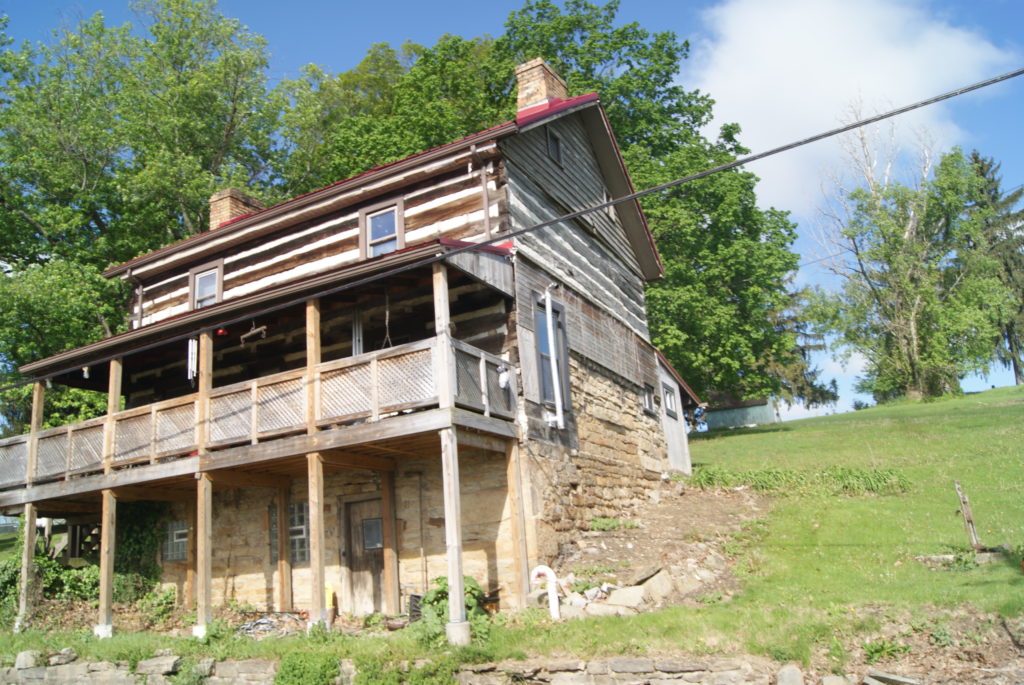
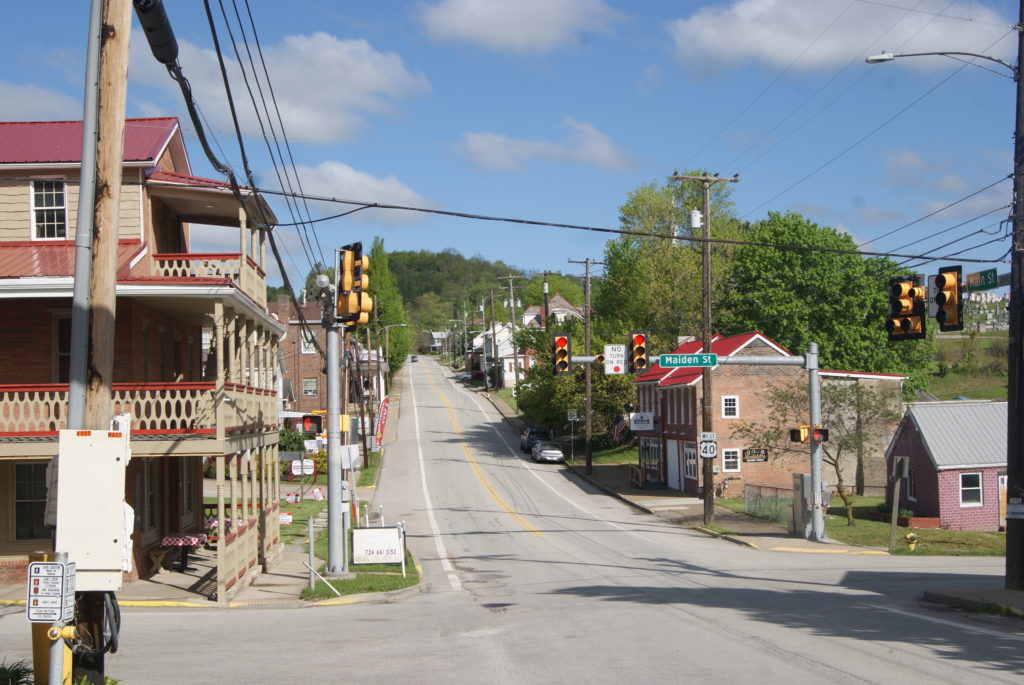
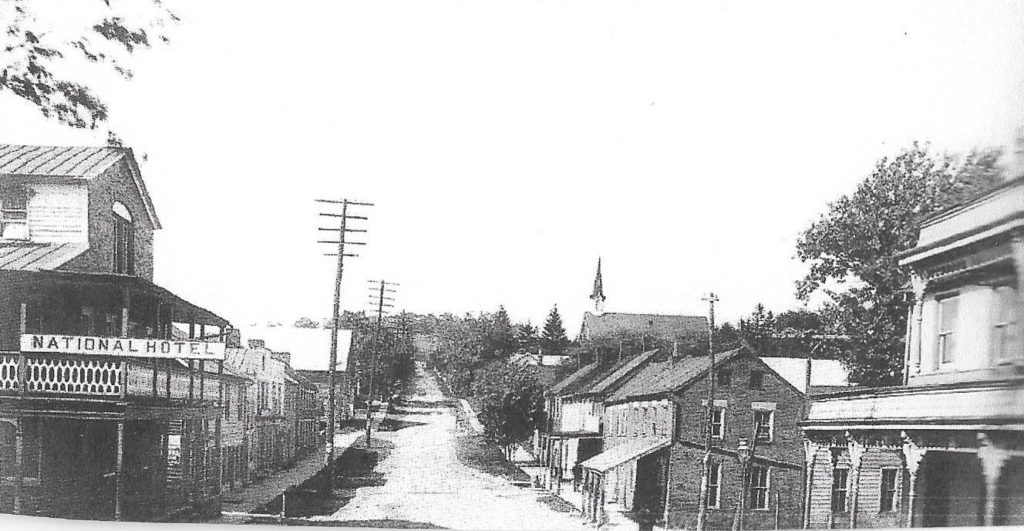
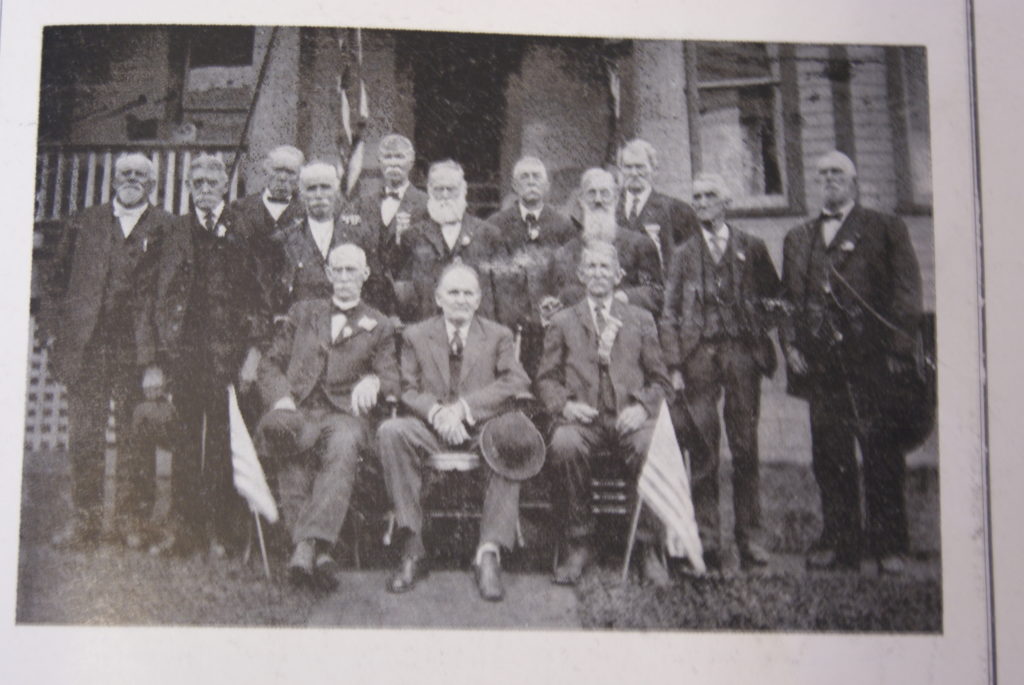
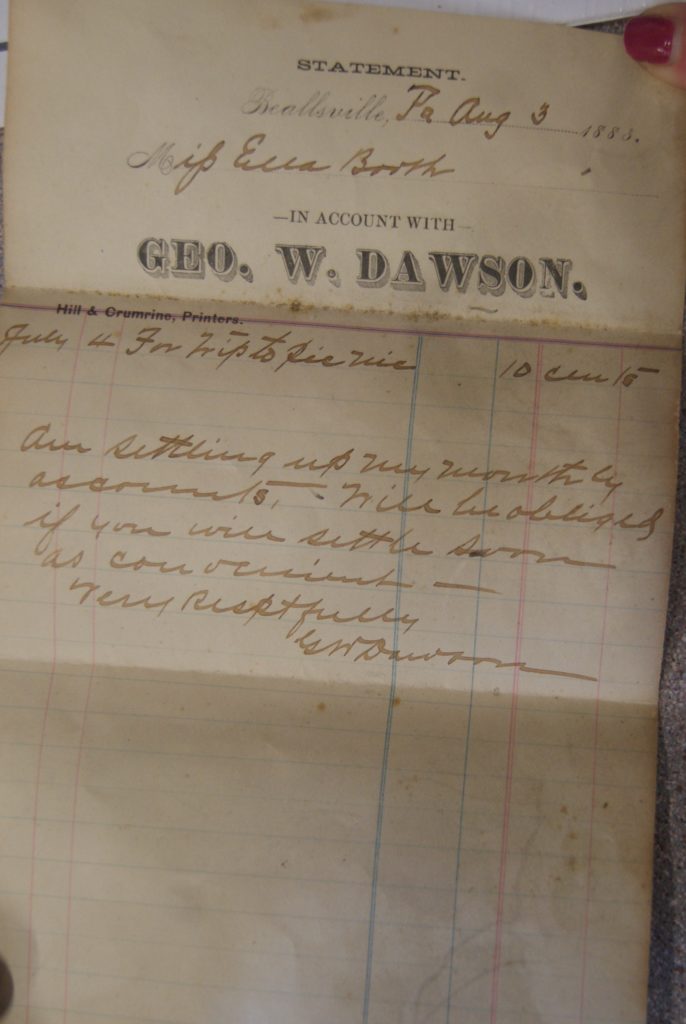
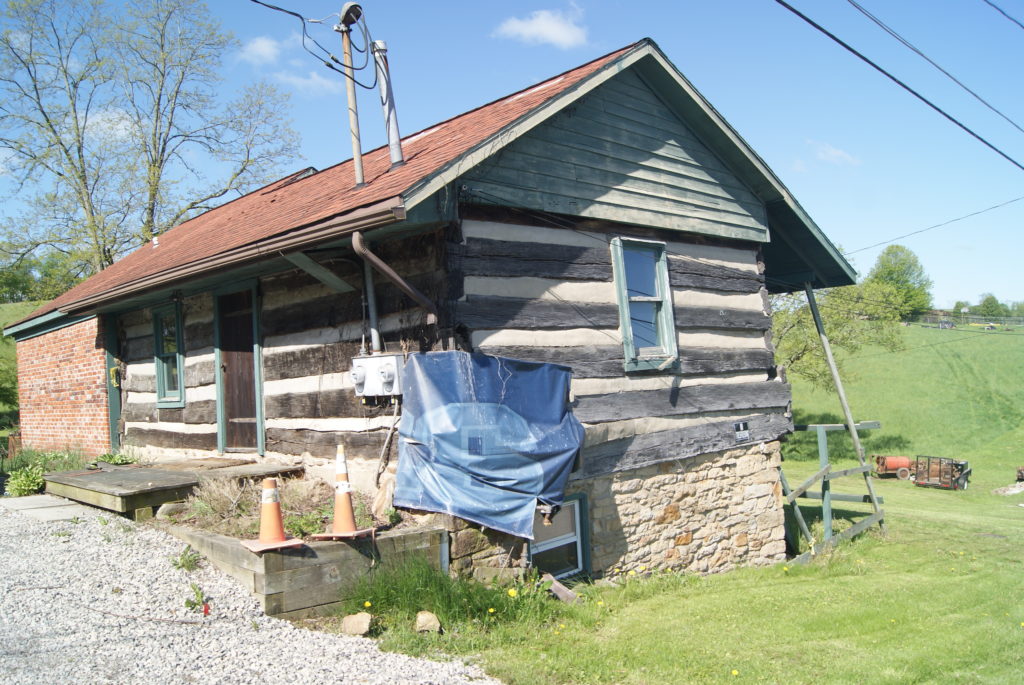
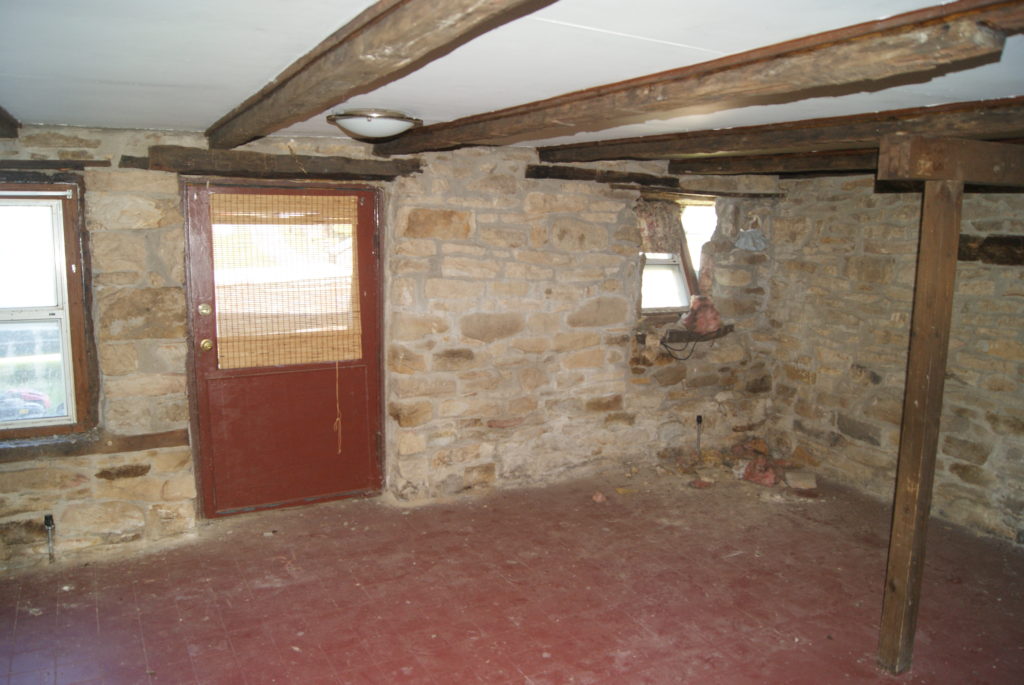
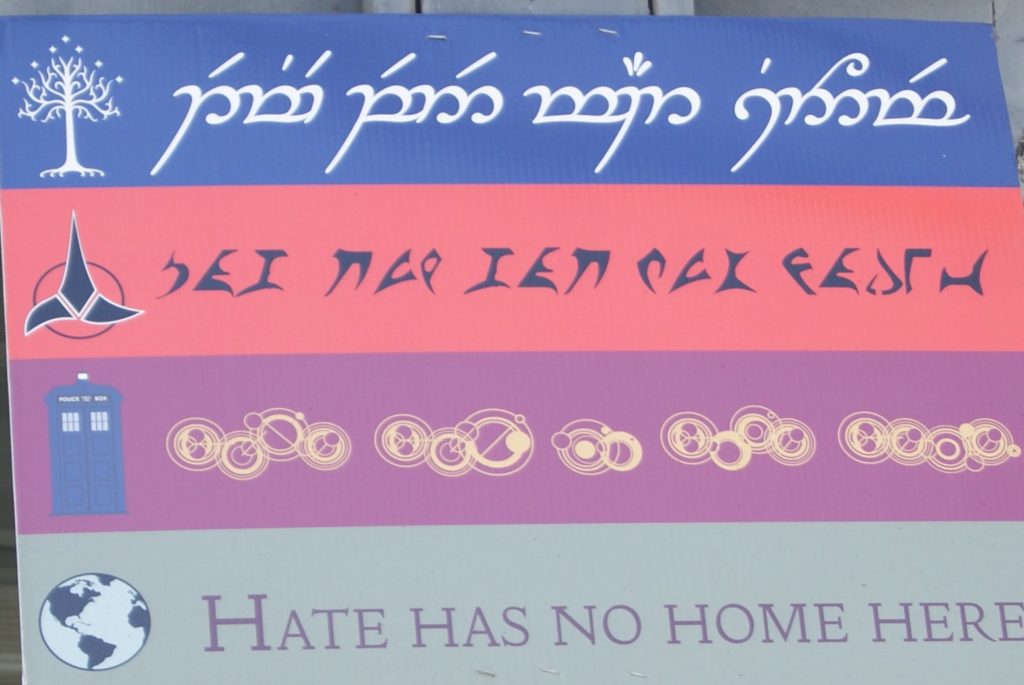
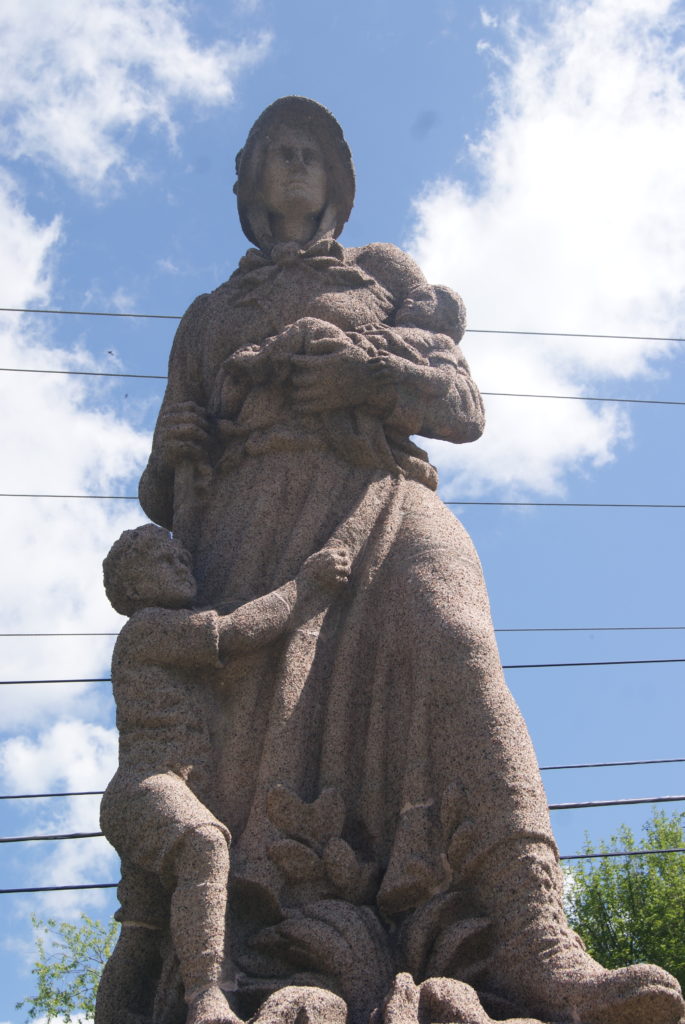
As always Kathy enjoy your blogs so much.
I was raised in Beallsville. Went to grade school in the school. It was a great town to live in.